This project is part of the @thi.ng/umbrella monorepo.
- About
- Installation
- Dependencies
- Usage examples
- Basic usage patterns
- Interpolation & SVG generation
- Fuzzy search
- Histogram generation & result grouping
- Pagination
- Multiplexing / parallel transducer application
- Moving average using sliding window
- Benchmark function execution time
- Apply inspectors to debug transducer pipeline
- Stream parsing / structuring
- CSV parsing
- Early termination
- Scan operator
- Weighted random choices
- Keyframe interpolation
- API
- Authors
- License
Lightweight transducer implementations for ES6 / TypeScript.
This library provides altogether ~130 transducers, reducers, sequence generators (ES6 generators/iterators) and additional supporting functions for composing data transformation pipelines.
The overall concept and many of the core functions offered here are directly inspired by the original Clojure implementation by Rich Hickey, though the implementation does heavily differ (also in contrast to some other JS based implementations) and dozens of less common, but generally highly useful operators have been added. See full list below.
Furthermore, most transducers & reducers provided here accept an
optional input iterable, which allows them to be used directly as
transformers instead of having to wrap them in one of the execution
functions (i.e. transduce(), reduce(), iterator(), run(),
step()). If called this way, transducer functions will return a
transforming ES6 iterator (generator) and reducing functions will return
a reduced result of the given input iterable.
STABLE - used in production
Search or submit any issues for this package
Thanks to a PR and
related issue by
@gavinpc-mindgrub, various transducers functions have been fixed for the
case when they're invoked with an empty string as input iterable.
Furthermore,
flatten()
is always treating strings as atomic values now, whereas before
top-level strings would be split into individual characters.
BREAKING CHANGES:
- The
interpolateiterator for keyframe interpolation has been renamed totween. In its place there's a new higher order transducer calledinterpolate, incl. syntax-sugar versionsinterpolateHermiteandinterpolateLinear. - The previously deprecated
wrapLeft,wrapRightandwrapBothiterators have been removed. - The
wrapiterator has been renamed towrapSidesand has a new signature/arguments, more aligned with the ones listed below.
The following new iterators have been added:
extendSidespadSidessymmetric
Several previously included internal support functions have been migrated to the @thi.ng/arrays package. You'll need to update your imports if you've been using any of these directly. Note that some of these functions also have changes to their arg order. See changelog.
Functions using randomness now all support an optional PRNG
implementation of the IRandom interface from the
@thi.ng/random
package.
- @thi.ng/transducers-binary - Binary data related transducers & reducers
- @thi.ng/transducers-fsm - Transducer-based Finite State Machine transformer
- @thi.ng/transducers-hdom - Transducer based UI updater for @thi.ng/hdom
- @thi.ng/transducers-patch - Reducers for patch-based, immutable-by-default array & object editing
- @thi.ng/transducers-stats - Transducers for statistical / technical analysis
- @thi.ng/csp - ES6 promise based CSP primitives & operations
- @thi.ng/grid-iterators - 2D grid iterators w/ multiple orderings
- @thi.ng/fsm - Composable primitives for building declarative, transducer based Finite-State Machines & matchers for arbitrary data streams
- @thi.ng/rstream - Reactive streams & subscription primitives for constructing dataflow graphs / pipelines
- @thi.ng/rstream-graph - Declarative dataflow graph construction for @thi.ng/rstream
- @thi.ng/rstream-log - Structured, multilevel & hierarchical loggers based on @thi.ng/rstream
- @thi.ng/sax - Transducer-based, SAX-like, non-validating, speedy & tiny XML parser
- HOFs, Transducers, Reducers
- Convolution, 1D/2D Cellular automata
- Disjoint Sets, Graph analysis, Signed Distance Fields
yarn add @thi.ng/transducers// ES module
<script type="module" src="https://unpkg.com/@thi.ng/transducers?module" crossorigin></script>
// UMD
<script src="https://unpkg.com/@thi.ng/transducers/lib/index.umd.js" crossorigin></script>Package sizes (gzipped, pre-treeshake): ESM: 8.17 KB / CJS: 8.71 KB / UMD: 7.89 KB
- @thi.ng/api
- @thi.ng/arrays
- @thi.ng/checks
- @thi.ng/compare
- @thi.ng/compose
- @thi.ng/errors
- @thi.ng/math
- @thi.ng/random
Several demos in this repo's /examples directory are using this package.
A selection:
| Screenshot | Description | Live demo | Source |
|---|---|---|---|
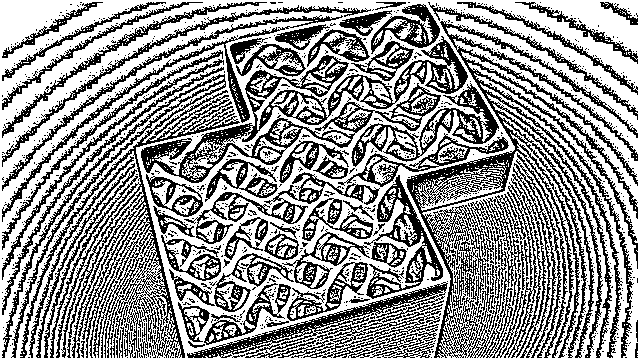 |
Interactive image processing (adaptive threshold) | Demo | Source |
 |
Figlet-style bitmap font creation with transducers | Demo | Source |
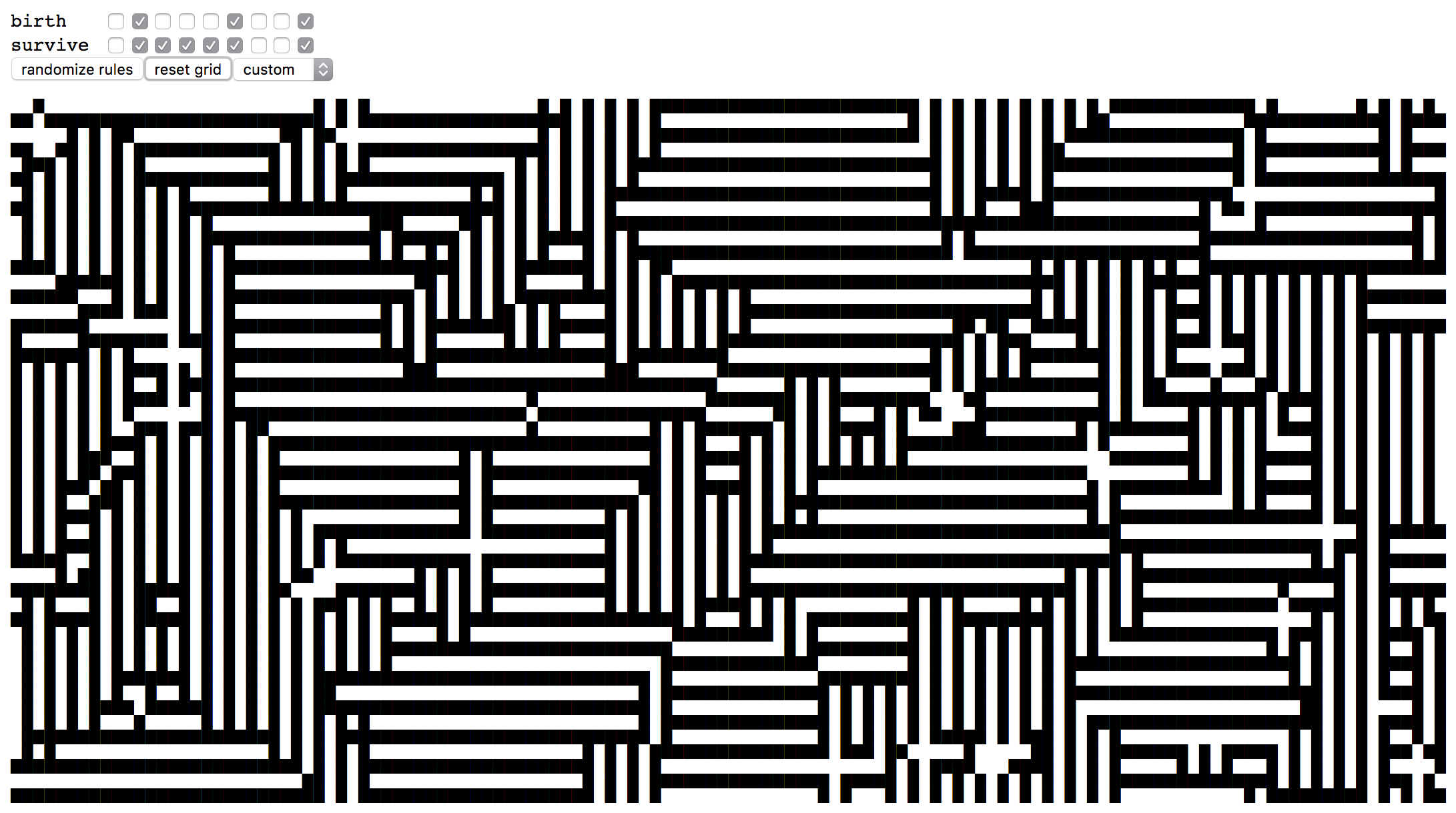 |
2D transducer based cellular automata | Demo | Source |
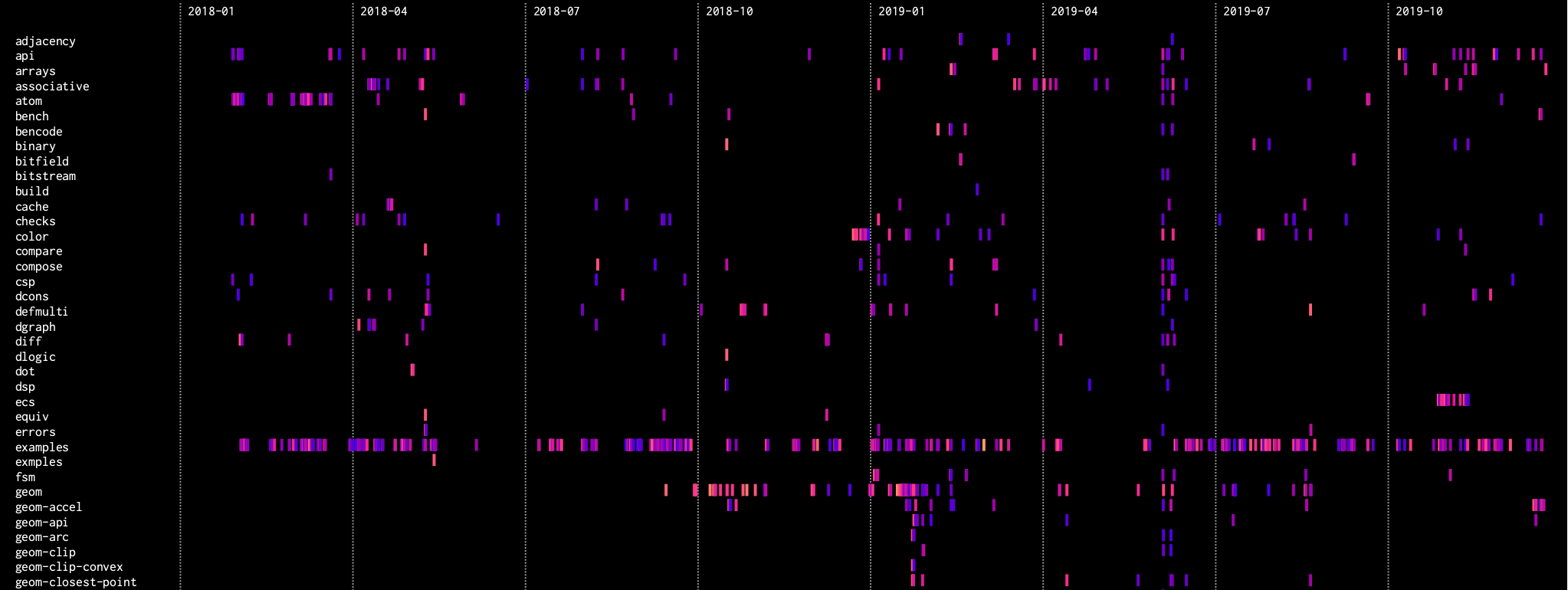 |
Heatmap visualization of this mono-repo's commits | Source | |
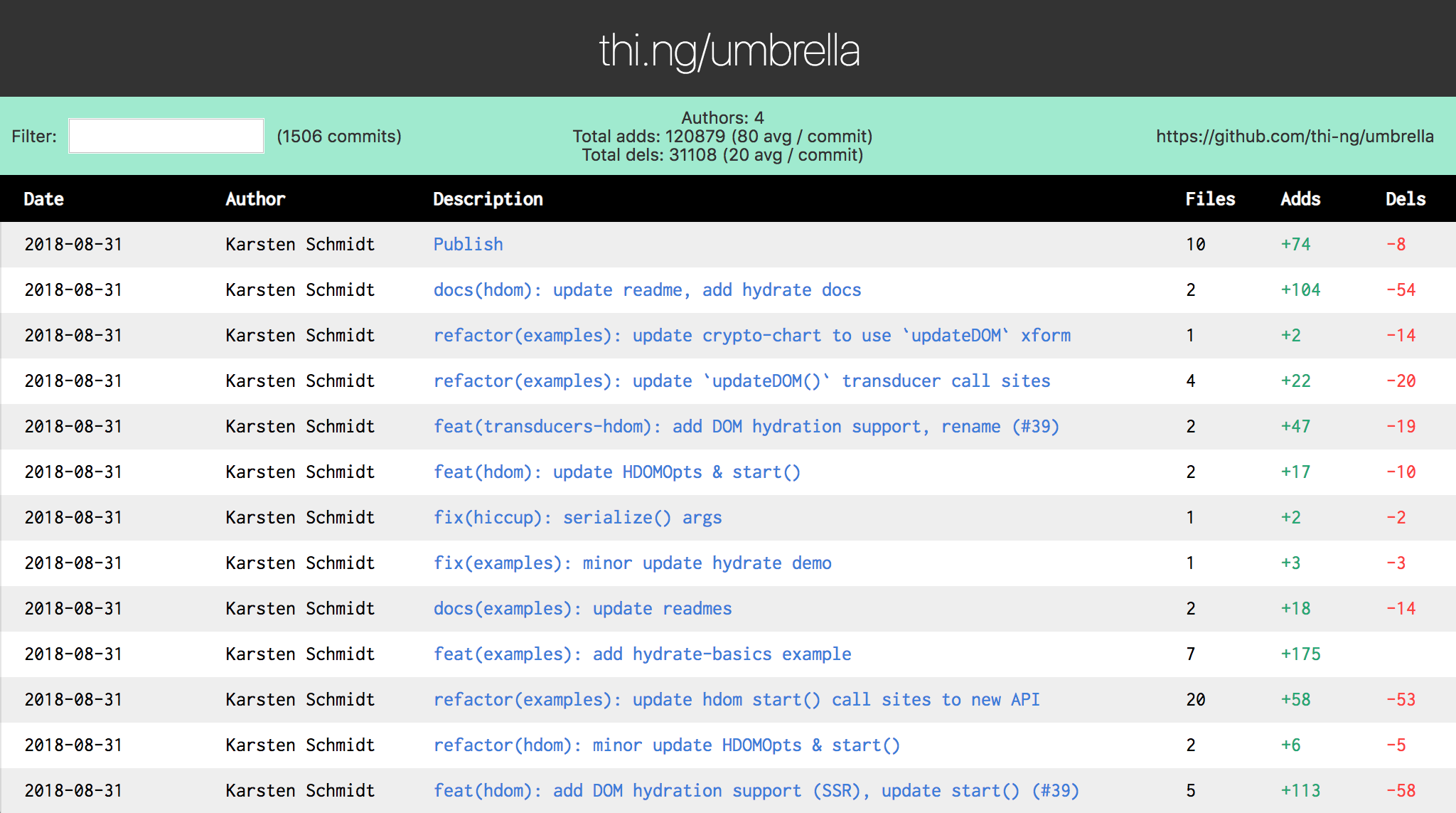 |
Filterable commit log UI w/ minimal server to provide commit history | Demo | Source |
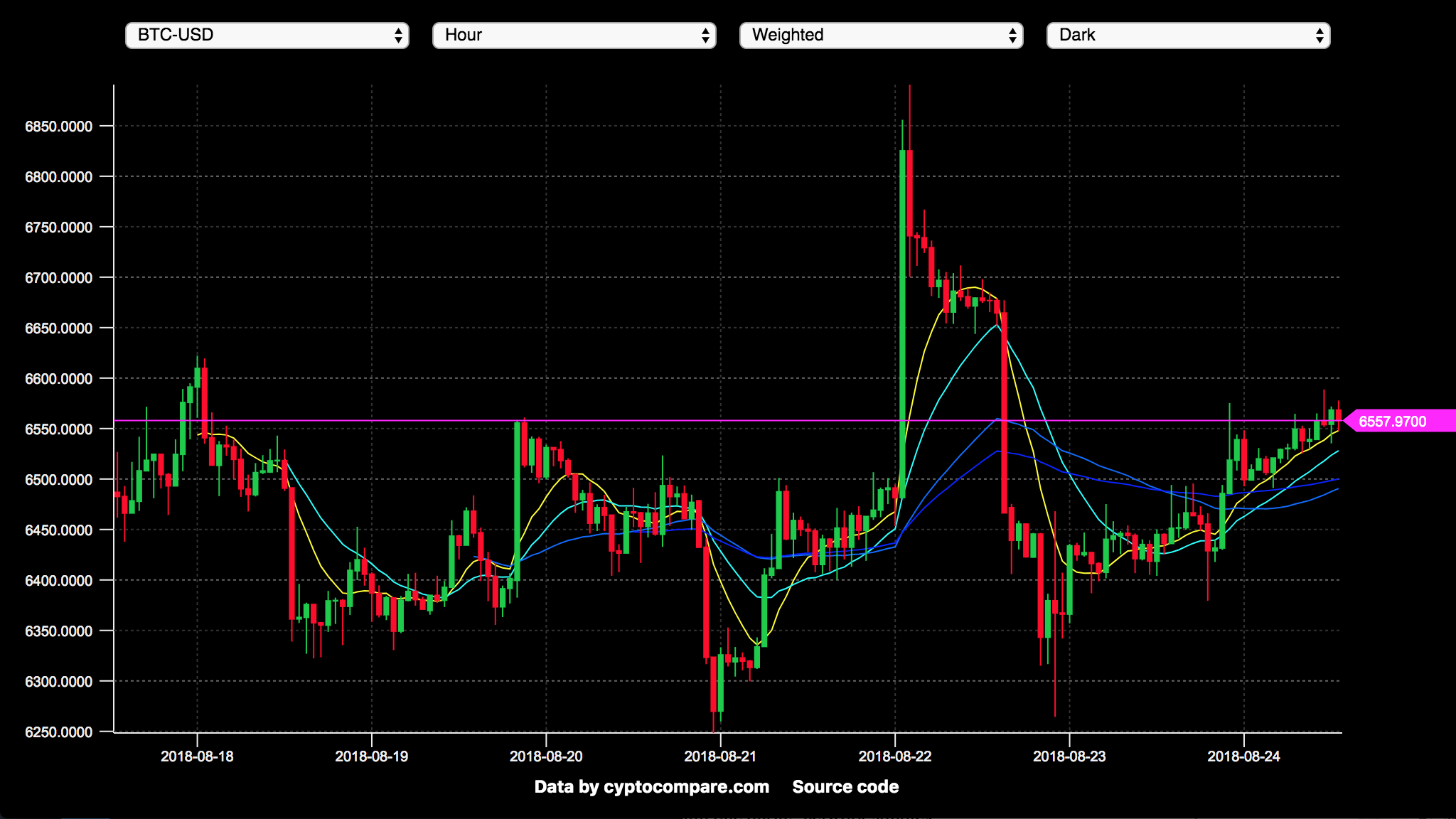 |
Basic crypto-currency candle chart with multiple moving averages plots | Demo | Source |
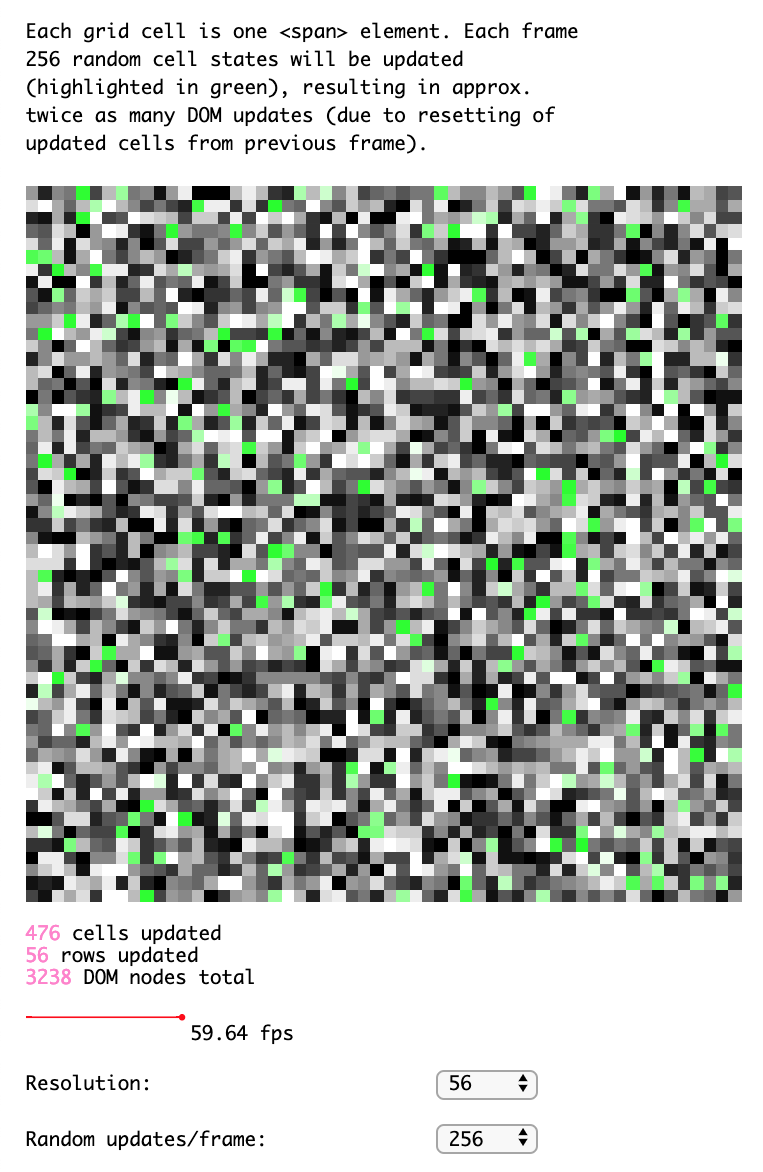 |
hdom update performance benchmark w/ config options | Demo | Source |
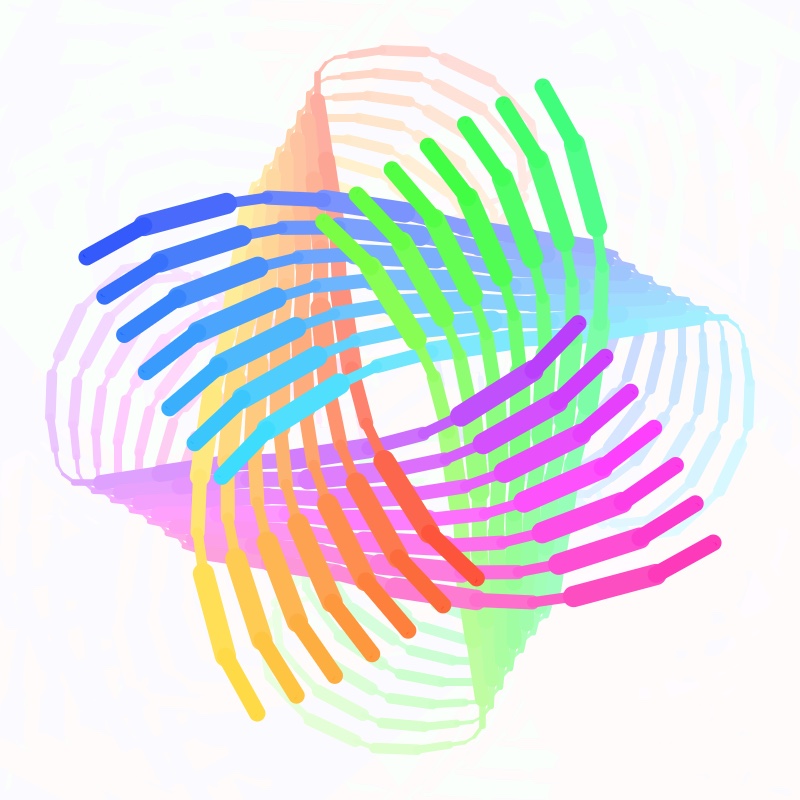 |
Interactive pattern drawing demo using transducers | Demo | Source |
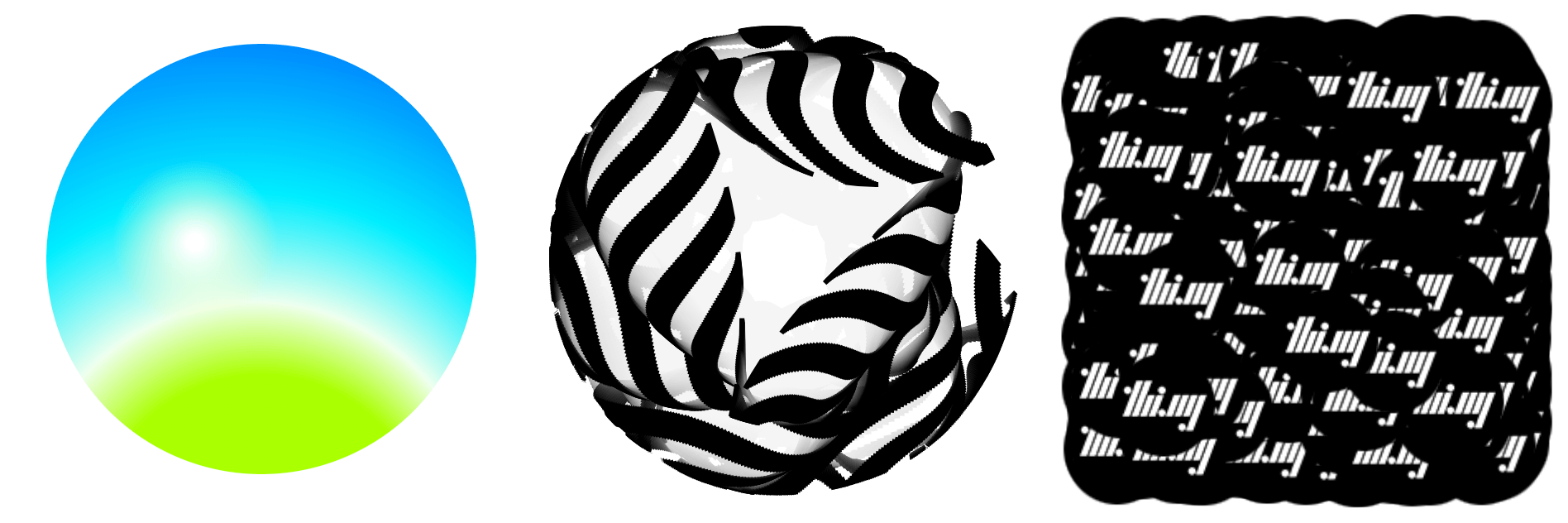 |
Various hdom-canvas shape drawing examples & SVG conversion / export | Demo | Source |
| Custom dropdown UI component w/ fuzzy search | Demo | Source | |
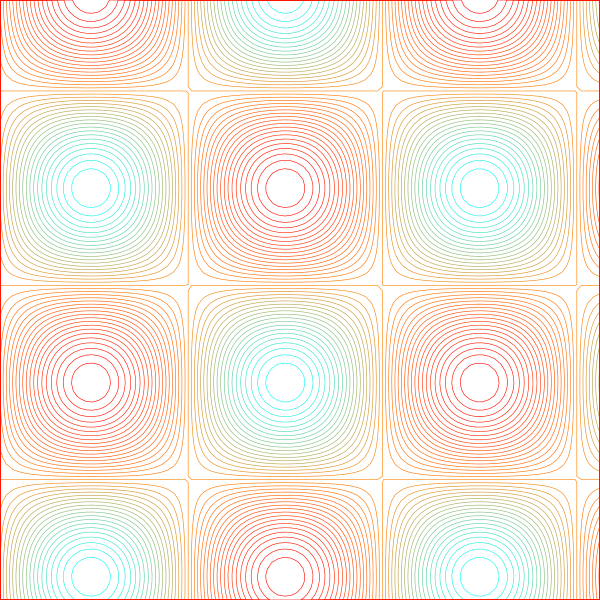 |
Animated sine plasma effect visualized using contour lines | Demo | Source |
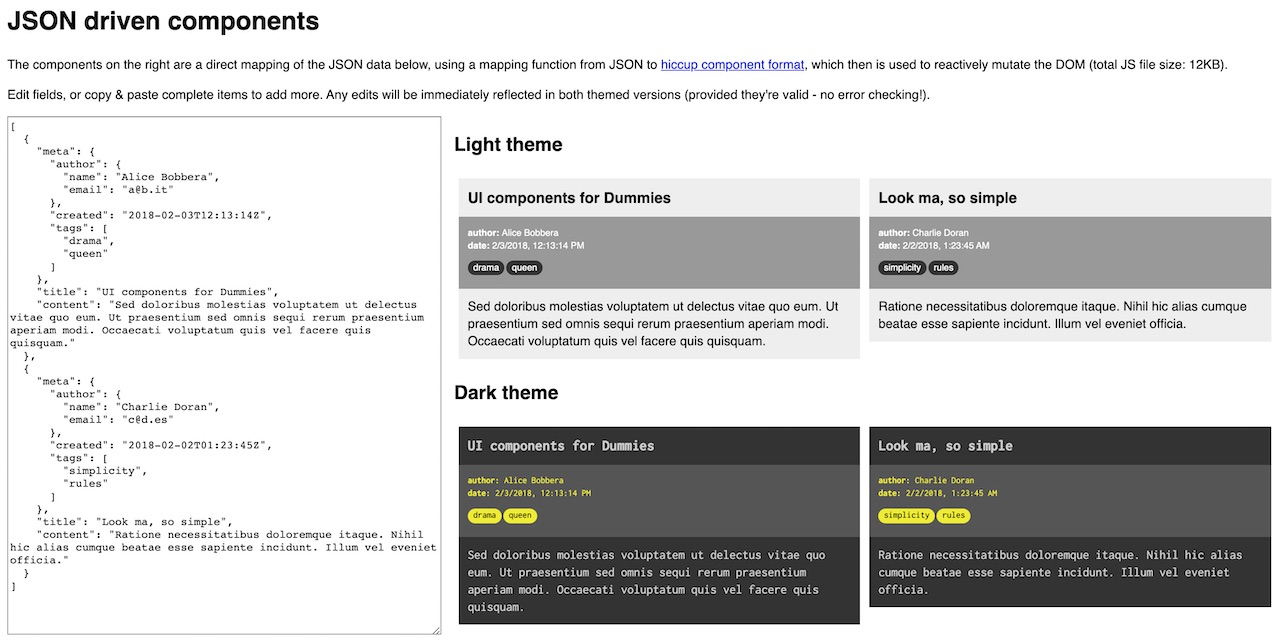 |
Transforming JSON into UI components | Demo | Source |
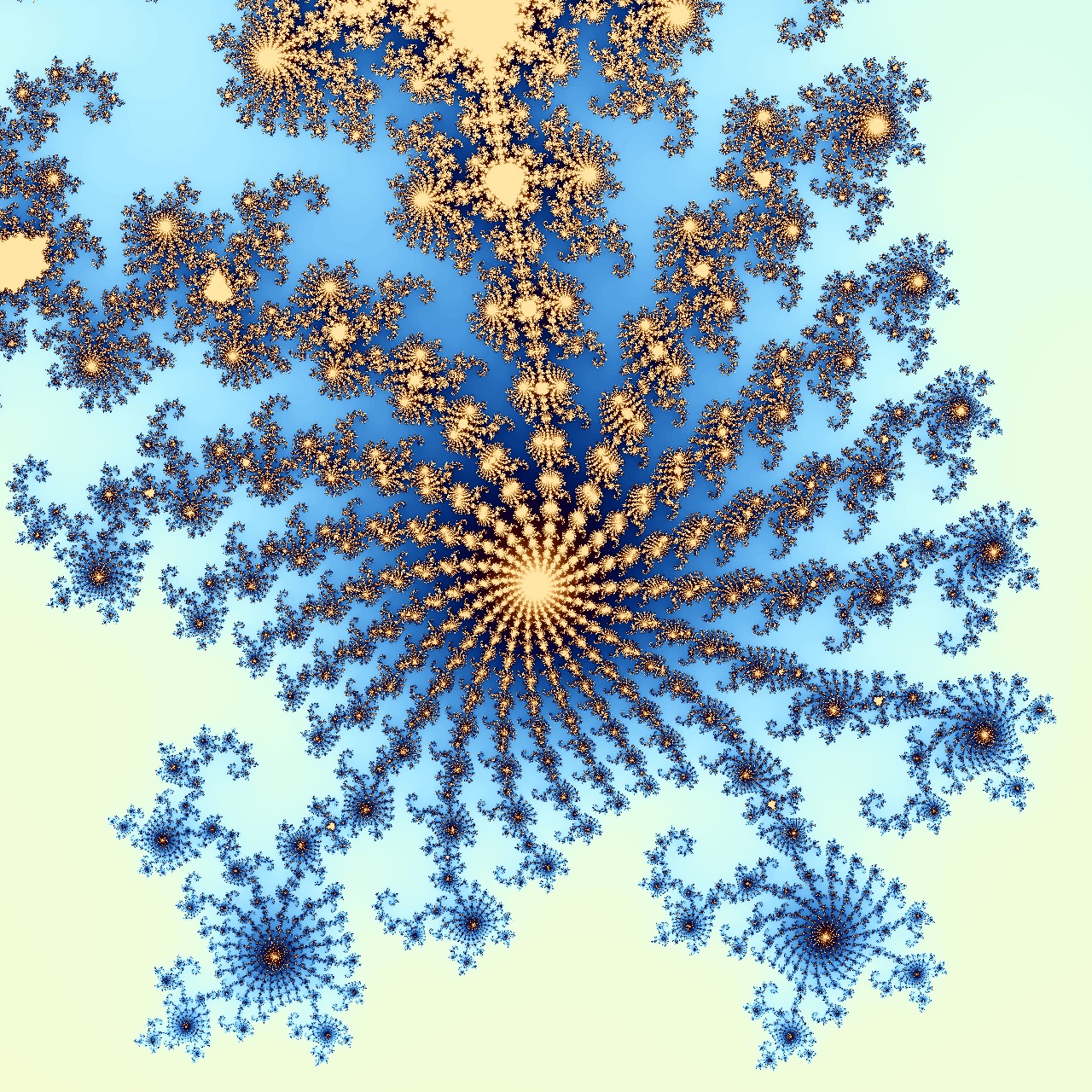 |
Worker based, interactive Mandelbrot visualization | Demo | Source |
 |
CLI util to visualize umbrella pkg stats | Source | |
 |
Unison wavetable synth with waveform editor | Demo | Source |
| Demonstates various rdom usage patterns | Demo | Source | |
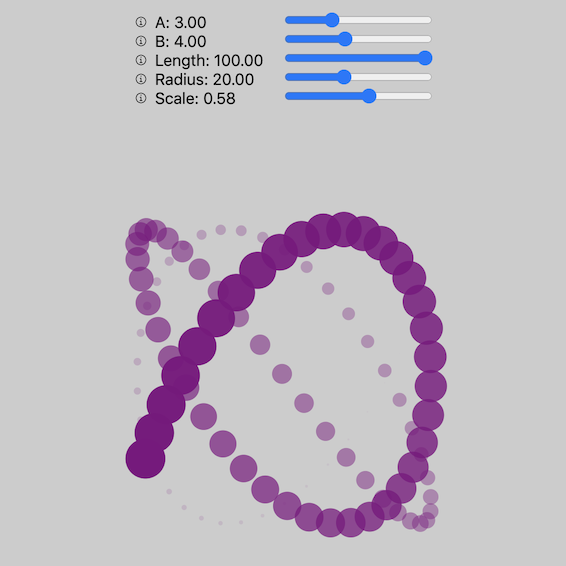 |
rdom & hiccup-canvas interop test | Demo | Source |
| Full umbrella repo doc string search w/ paginated results | Demo | Source | |
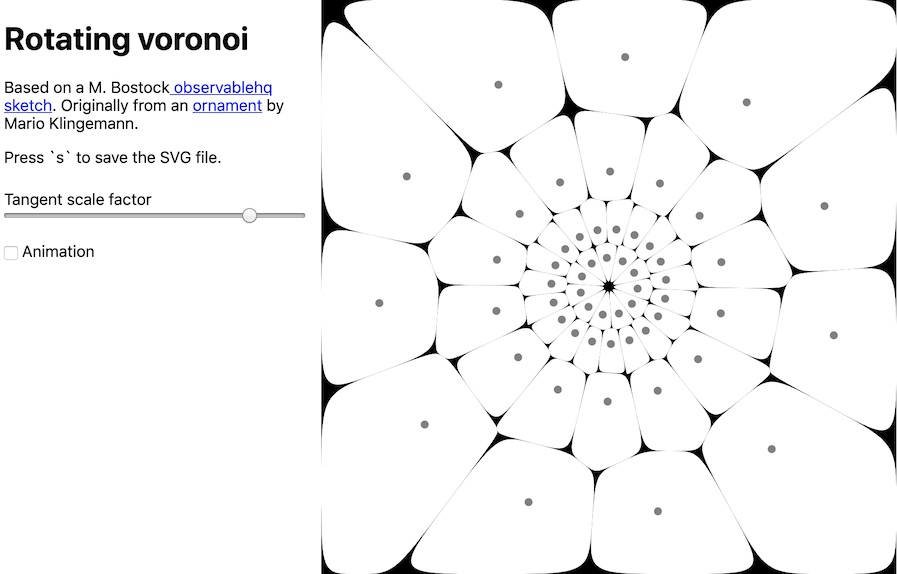 |
Animated Voronoi diagram, cubic splines & SVG download | Demo | Source |
 |
Minimal demo of using rstream constructs to form an interceptor-style event loop | Demo | Source |
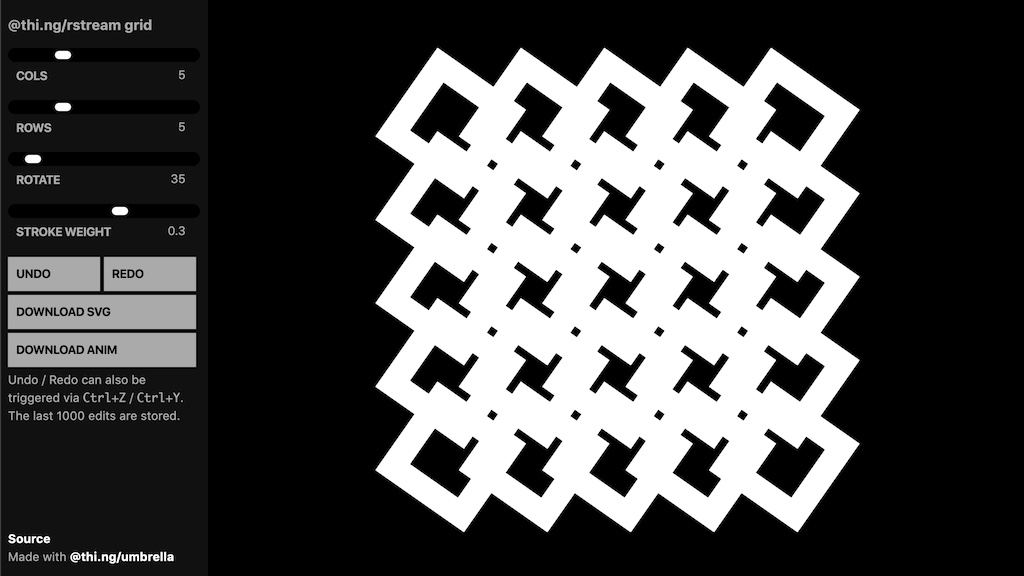 |
Interactive grid generator, SVG generation & export, undo/redo support | Demo | Source |
 |
Fork-join worker-based raymarch renderer | Demo | Source |
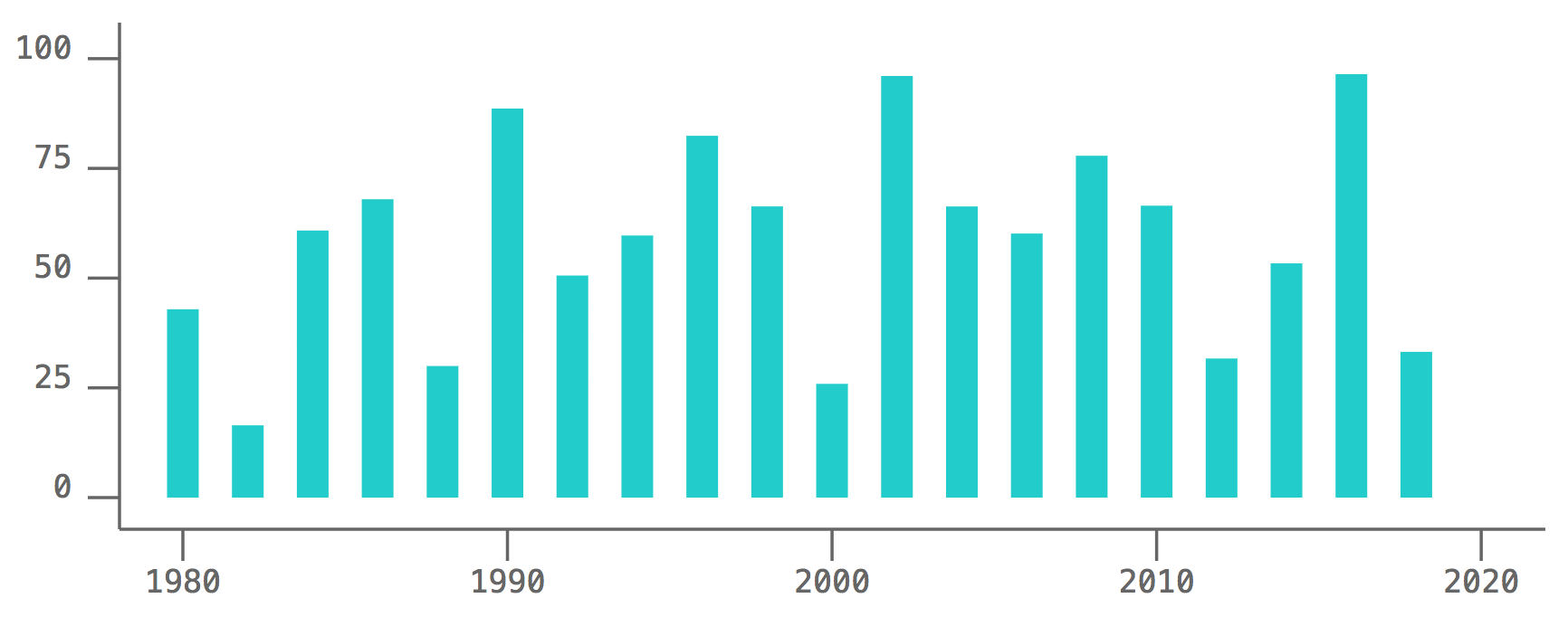 |
Simplistic SVG bar chart component | Demo | Source |
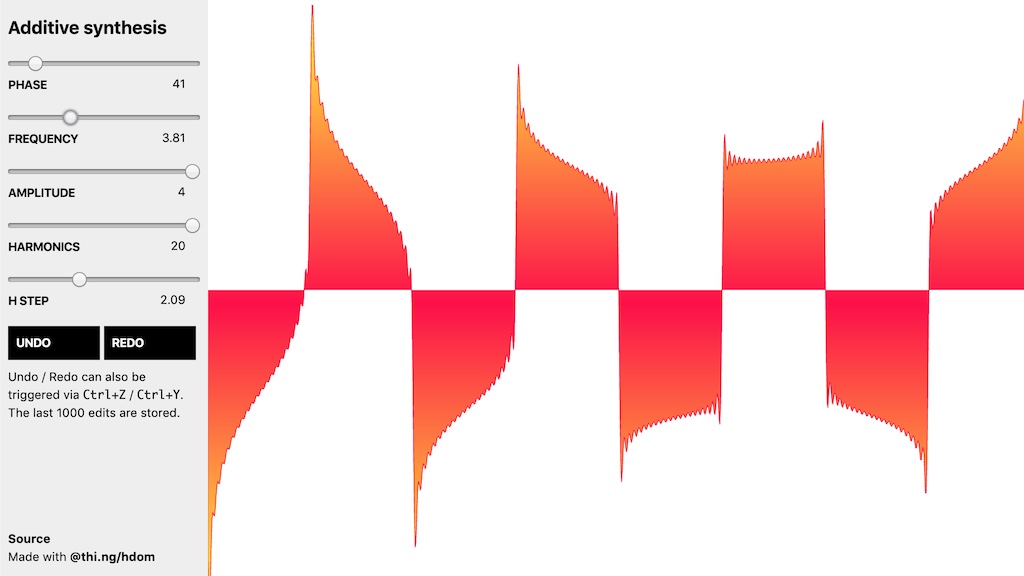 |
Additive waveform synthesis & SVG visualization with undo/redo | Demo | Source |
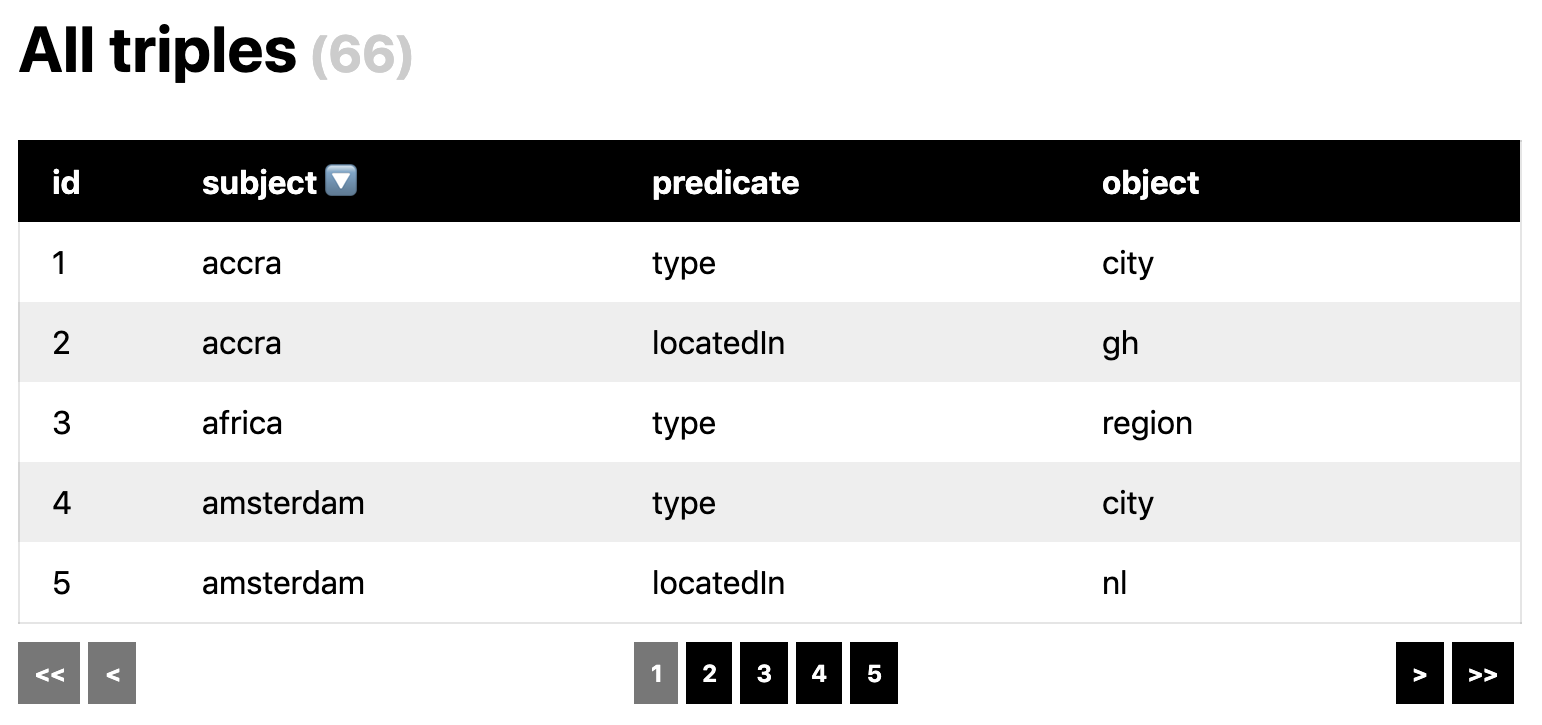 |
Triple store query results & sortable table | Demo | Source |
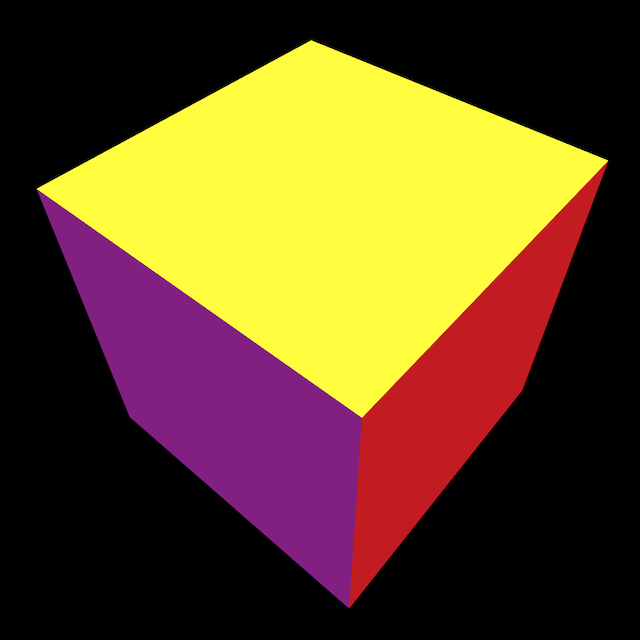 |
WebGL multi-colored cube mesh | Demo | Source |
 |
WebGL instancing, animated grid | Demo | Source |
 |
WebGL MSDF text rendering & particle system | Demo | Source |
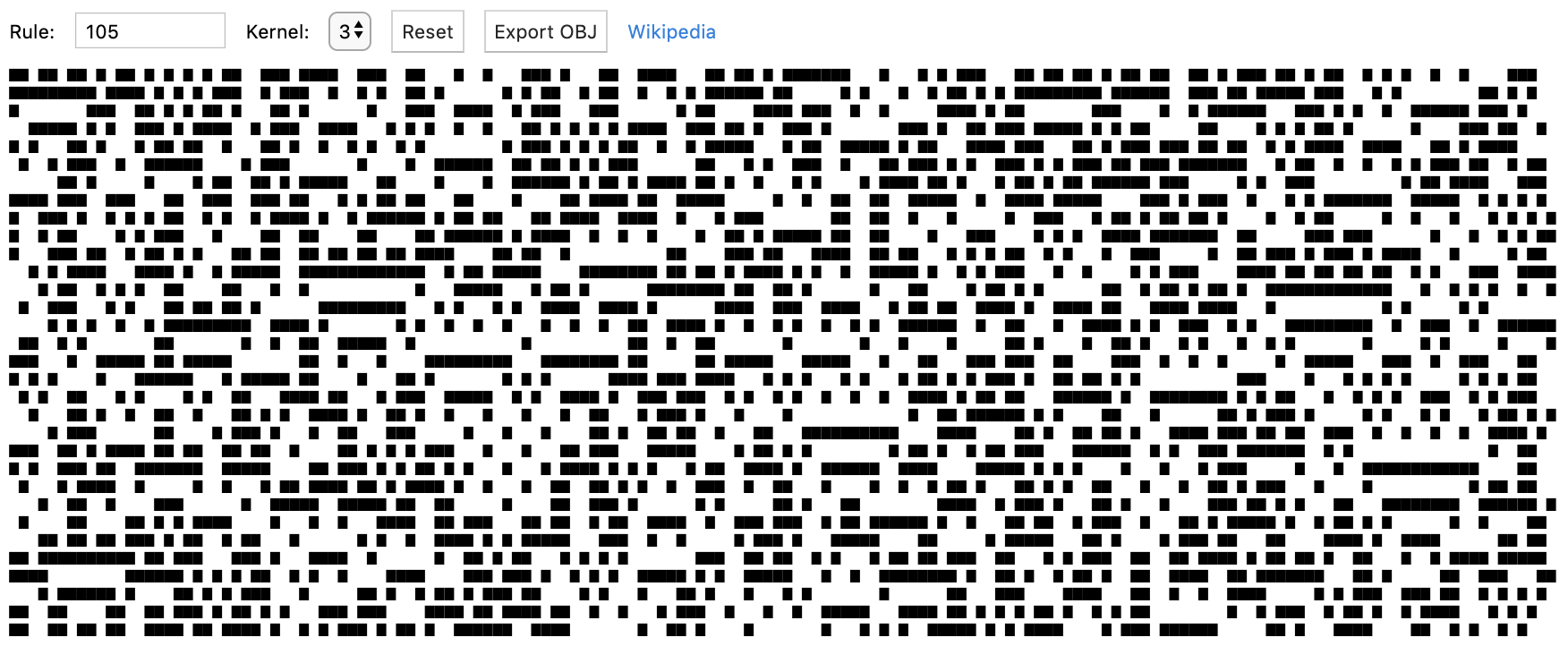 |
1D Wolfram automata with OBJ point cloud export | Demo | Source |
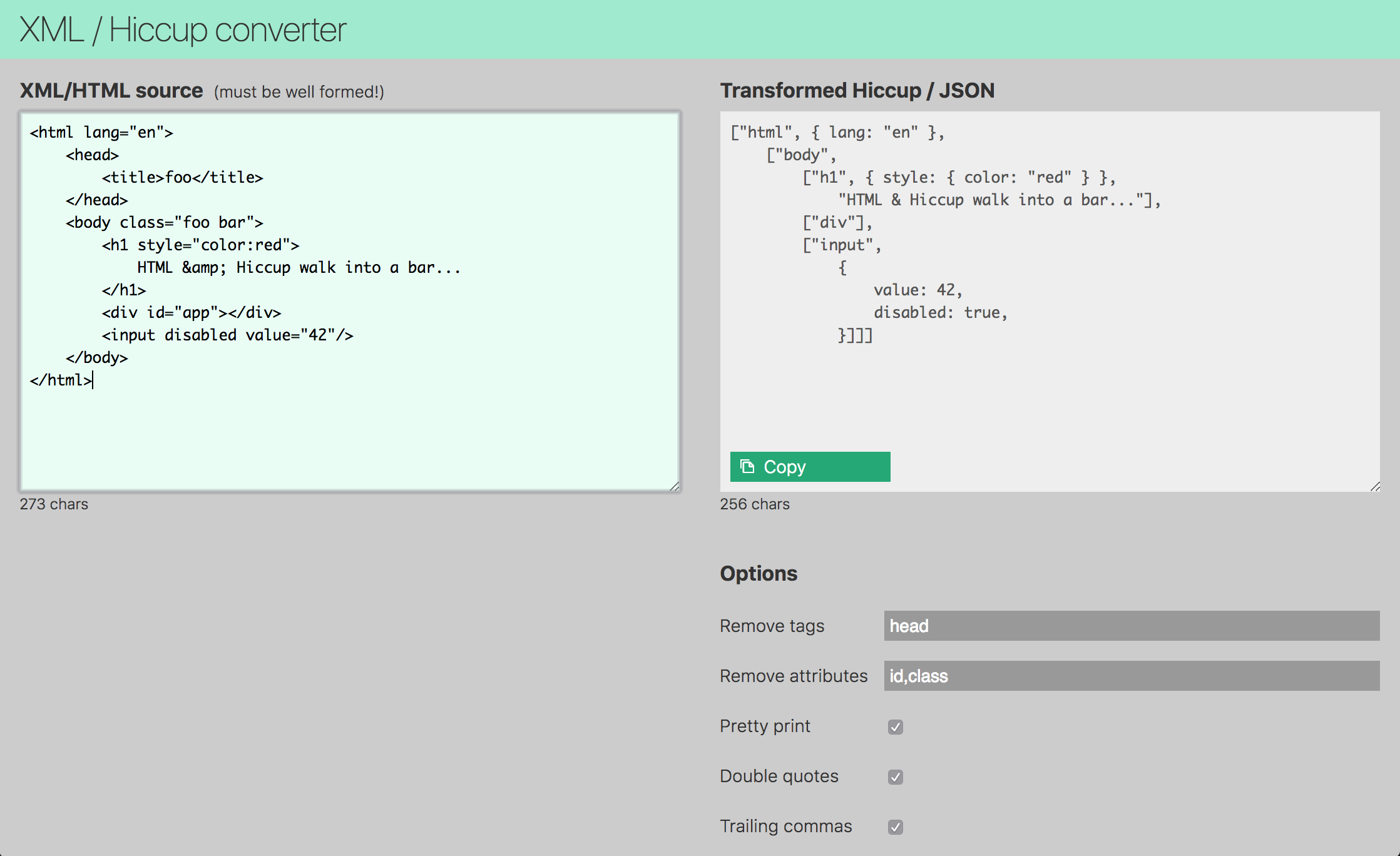 |
XML/HTML/SVG to hiccup/JS conversion | Demo | Source |
// compose transducer
xform = tx.comp(
tx.filter((x) => (x & 1) > 0), // odd numbers only
tx.distinct(), // distinct numbers only
tx.map((x) => x * 3) // times 3
);
// collect into array (tx.push)
tx.transduce(xform, tx.push(), [1, 2, 3, 4, 5, 4, 3, 2, 1]);
// [ 3, 9, 15 ]
// re-use same xform, but collect into ES6 Set
tx.transduce(xform, tx.conj(), [1, 2, 3, 4, 5, 4, 3, 2, 1]);
// Set { 3, 9, 15 }
// or apply as transforming iterator
// no reduction, only transformations
[...tx.iterator(xform, [1, 2, 3, 4, 5])]
// [ 3, 9, 15]
// alternatively provide an input iterable and
// use xform as transforming iterator
[...tx.filter((x) => /[A-Z]/.test(x), "Hello World!")]
// ["H", "W"]
// single step execution
// returns undefined if transducer returned no result for this input
// returns array if transducer step produced multiple results
f = tx.step(xform);
f(1) // 3
f(2) // undefined
f(3) // 9
f(4) // undefined
f = tx.step(take)This example uses the @thi.ng/geom package for quick SVG generation.
import { asSvg, svgDoc, circle, polyline } from "@thi.ng/geom";
// source values
const values = [5, 10, 4, 8, 20, 2, 11, 7];
// interpolate values and transform into 2D points
const vertices = [...tx.iterator(
tx.comp(
tx.interpolateHermite(10),
tx.mapIndexed((x, y) => [x, y])
),
// duplicate first & last vals (1x LHS / 2x RHS)
// this is only needed for hermite interpolation
// (see doc string for `interpolateHermite`)
tx.extendSides(values, 1, 2)
)];
// generate SVG
asSvg(
svgDoc(
{ width: 800, height: 200, "stroke-width": 0.1 },
// interpolated points as polyline
polyline(vertices, { stroke: "red" }),
// original values as dots
...values.map((y, x) => circle([x * 10, y], 0.2))
)
)[...tx.filterFuzzy("ho", ["hello", "hallo", "hey", "heyoka"])]
// ["hello", "hallo", "heyoka"]
[...tx.filterFuzzy("hlo", ["hello", "hallo", "hey", "heyoka"])]
// ["hello", "hallo"]
// works with any array-like values & supports custom key extractors
[...tx.filterFuzzy(
[1, 3],
{ key: (x) => x.tags },
[
{ tags: [1, 2, 3] },
{ tags: [2, 3, 4] },
{ tags: [4, 5, 6] },
{ tags: [1, 3, 6] }
]
)]
// [ { tags: [ 1, 2, 3 ] }, { tags: [ 1, 3, 6 ] } ]// use the `frequencies` reducer to create
// a map counting occurrence of each value
tx.transduce(tx.map((x) => x.toUpperCase()), tx.frequencies(), "hello world");
// Map { 'H' => 1, 'E' => 1, 'L' => 3, 'O' => 2, ' ' => 1, 'W' => 1, 'R' => 1, 'D' => 1 }
// reduction only (no transform)
tx.reduce(tx.frequencies(), [1, 1, 1, 2, 3, 4, 4]);
// Map { 1 => 3, 2 => 1, 3 => 1, 4 => 2 }
// direct reduction if input is given
tx.frequencies([1, 1, 1, 2, 3, 4, 4]);
// Map { 1 => 3, 2 => 1, 3 => 1, 4 => 2 }
// with optional key function, here to bin by word length
tx.frequencies(
(x) => x.length,
"my camel is collapsing and needs some water".split(" ")
);
// Map { 2 => 2, 5 => 3, 10 => 1, 3 => 1, 4 => 1 }
// actual grouping (here: by word length)
tx.groupByMap(
{ key: (x) => x.length },
"my camel is collapsing and needs some water".split(" ")
);
// Map {
// 2 => [ 'my', 'is' ],
// 3 => [ 'and' ],
// 4 => [ 'some' ],
// 5 => [ 'camel', 'needs', 'water' ],
// 10 => [ 'collapsing' ]
// }// extract only items for given page id & page length
[...tx.page(0, 5, tx.range(12))]
// [ 0, 1, 2, 3, 4 ]
// when composing with other transducers
// it's most efficient to place `page()` early on in the chain
// that way only the page items will be further processed
[...tx.iterator(tx.comp(tx.page(1, 5), tx.map(x => x * 10)), tx.range(12))]
// [ 50, 60, 70, 80, 90 ]
// use `padLast()` to fill up missing values
[...tx.iterator(tx.comp(tx.page(2, 5), tx.padLast(5, "n/a")), tx.range(12))]
// [ 10, 11, 'n/a', 'n/a', 'n/a' ]
// no values produced for invalid pages
[...tx.page(3, 5, tx.range(12))]
// []multiplex and multiplexObj can be used to transform values in
parallel using the provided transducers (which can be composed as usual)
and results in a tuple or keyed object.
tx.transduce(
tx.multiplex(
tx.map((x) => x.charAt(0)),
tx.map((x) => x.toUpperCase()),
tx.map((x) => x.length)
),
tx.push(),
["Alice", "Bob", "Charlie"]
);
// [ [ "A", "ALICE", 5 ], [ "B", "BOB", 3 ], [ "C", "CHARLIE", 7 ] ]
tx.transduce(
tx.multiplexObj({
initial: tx.map((x) => x.charAt(0)),
name: tx.map((x) => x.toUpperCase()),
len: tx.map((x) => x.length)
}),
tx.push(),
["Alice", "Bob", "Charlie"]
);
// [ { len: 5, name: 'ALICE', initial: 'A' },
// { len: 3, name: 'BOB', initial: 'B' },
// { len: 7, name: 'CHARLIE', initial: 'C' } ]// use nested reduce to compute window averages
tx.transduce(
tx.comp(
tx.partition(5, 1),
tx.map(x => tx.reduce(tx.mean(), x))
),
tx.push(),
[1, 2, 3, 3, 4, 5, 5, 6, 7, 8, 8, 9, 10]
)
// [ 2.6, 3.4, 4, 4.6, 5.4, 6.2, 6.8, 7.6, 8.4 ]
// this combined transducer is also directly
// available as: `tx.movingAverage(n)`
[...tx.movingAverage(5, [1, 2, 3, 3, 4, 5, 5, 6, 7, 8, 8, 9, 10])]
// [ 2.6, 3.4, 4, 4.6, 5.4, 6.2, 6.8, 7.6, 8.4 ]// function to test
fn = () => {
let x;
for (i = 0; i < 1e6; i++) {
x = Math.cos(i);
}
return x;
};
// compute the mean of 100 runs
tx.transduce(tx.benchmark(), tx.mean(), tx.repeatedly(fn, 100));
// 1.93 (milliseconds)// alternatively, use tx.sideEffect() for any side fx
tx.transduce(
tx.comp(
tx.trace("orig"),
tx.map((x) => x + 1),
tx.trace("mapped"),
tx.filter((x) => (x & 1) > 0)
),
tx.push(),
[1, 2, 3, 4]
);
// orig 1
// mapped 2
// orig 2
// mapped 3
// orig 3
// mapped 4
// orig 4
// mapped 5
// [ 3, 5 ]The struct transducer is simply a composition of: partitionOf -> partition -> rename -> mapKeys. See code
here.
// Higher-order transducer to convert linear input into structured objects
// using given field specs and ordering. A single field spec is an array of
// 2 or 3 items: `[name, size, transform?]`. If `transform` is given, it will
// be used to produce the final value for this field. In the example below,
// it is used to unwrap the ID field values, e.g. from `[0] => 0`
[
...tx.struct(
[["id", 1, (id) => id[0]], ["pos", 2], ["vel", 2], ["color", 4]],
[0, 100, 200, -1, 0, 1, 0.5, 0, 1, 1, 0, 0, 5, 4, 0, 0, 1, 1]
)
];
// [ { color: [ 1, 0.5, 0, 1 ],
// vel: [ -1, 0 ],
// pos: [ 100, 200 ],
// id: 0 },
// { color: [ 0, 0, 1, 1 ],
// vel: [ 5, 4 ],
// pos: [ 0, 0 ],
// id: 1 } ]tx.transduce(
tx.comp(
// split into rows
tx.mapcat((x) => x.split("\n")),
// split each row
tx.map((x) => x.split(",")),
// convert each row into object, rename array indices
tx.rename({ id: 0, name: 1, alias: 2, num: "length" })
),
tx.push(),
["100,typescript\n101,clojure,clj\n110,rust,rs"]
);
// [ { num: 2, name: 'typescript', id: '100' },
// { num: 3, alias: 'clj', name: 'clojure', id: '101' },
// { num: 3, alias: 'rs', name: 'rust', id: '110' } ]// result is realized after max. 7 values, irrespective of nesting
tx.transduce(tx.comp(tx.flatten(), tx.take(7)), tx.push(), [
1,
[2, [3, 4, [5, 6, [7, 8], 9, [10]]]]
]);
// [1, 2, 3, 4, 5, 6, 7]// this transducer uses 2 scans (a scan = inner reducer per item)
// 1) counts incoming values
// 2) forms an array of the current counter value `x` & repeated `x` times
// 3) emits results as series of reductions in the outer array produced
// by the main reducer
// IMPORTANT: since arrays are mutable we use `pushCopy` as the inner reducer
// instead of `push` (the outer reducer)
xform = tx.comp(
tx.scan(tx.count()),
tx.map(x => [...tx.repeat(x,x)]),
tx.scan(tx.pushCopy())
)
[...tx.iterator(xform, [1, 1, 1, 1])]
// [ [ [ 1 ] ],
// [ [ 1 ], [ 2, 2 ] ],
// [ [ 1 ], [ 2, 2 ], [ 3, 3, 3 ] ],
// [ [ 1 ], [ 2, 2 ], [ 3, 3, 3 ], [ 4, 4, 4, 4 ] ] ]
// more simple & similar to previous, but without the 2nd xform step
tx.transduce(tx.comp(tx.scan(tx.count()), tx.scan(tx.pushCopy())), tx.push(), [1,1,1,1])
// [ [ 1 ], [ 1, 2 ], [ 1, 2, 3 ], [ 1, 2, 3, 4 ] ][...tx.take(10, tx.choices("abcd", [1, 0.5, 0.25, 0.125]))];
// [ 'a', 'a', 'b', 'a', 'a', 'b', 'a', 'c', 'd', 'b' ]
tx.transduce(
tx.take(1000),
tx.frequencies(),
tx.choices("abcd", [1, 0.5, 0.25, 0.125])
);
// Map { 'c' => 132, 'a' => 545, 'b' => 251, 'd' => 72 }See
tween()
docs for details.
[
...tween(
10,
0,
100,
(a, b) => [a, b],
([a, b], t) => Math.floor(a + (b - a) * t),
[20, 100],
[50, 200],
[80, 0]
)
];
// [ 100, 100, 100, 133, 166, 200, 133, 66, 0, 0, 0 ]Apart from type aliases, the only real types defined are:
Reducers are the core building blocks of transducers. Unlike other
implementations using OOP approaches, a Reducer in this lib is a
simple 3-element array of functions, each addressing a separate
processing step.
Since v0.6.0 the bundled reducers are all wrapped in functions to provide a uniform API (and some of them can be preconfigured and/or are stateful closures). However, it's fine to define stateless reducers as constant arrays.
interface Reducer<A, B> extends Array<any> {
/**
* Initialization, e.g. to provide a suitable accumulator value,
* only called when no initial accumulator has been provided by user.
*/
[0]: () => A;
/**
* Completion. When called usually just returns `acc`, but stateful
* transformers should flush/apply their outstanding results.
*/
[1]: (acc: A) => A;
/**
* Reduction step. Combines new input with accumulator.
* If reduction should terminate early, wrap result via `reduced()`
*/
[2]: (acc: A, x: B) => A | Reduced<A>;
}
// A concrete example:
const push: Reducer<any[], any> = [
// init
() => [],
// completion (nothing to do in this case)
(acc) => acc,
// step
(acc, x) => (acc.push(x), acc)
];partition, partitionBy, streamSort, streamShuffle are (examples
of) transducers making use of their 1-arity completing function.
class Reduced<T> implements IDeref<T> {
protected value: T;
constructor(val: T);
deref(): T;
}Simple type wrapper to identify early termination of a reducer. Does not
modify wrapped value by injecting magic properties. Instances can be
created via reduced(x) and handled via these helper functions:
reduced(x: any): anyisReduced(x: any): booleanensureReduced(x: any): Reduced<any>unreduced(x: any): any
By default reduce() consumes inputs via the standard ES6 Iterable
interface, i.e. using a for..of.. loop, but uses optimized routes
for some types: Array-like inputs are consumed via a traditional
for-loop and custom optimized iterations can be provided via
implementations of the IReducible interface in the source collection
type. Examples can be found here:
Note: The IReducible interface is only used by reduce(),
transduce() and run().
From Rich Hickey's original definition:
A transducer is a transformation from one reducing function to another
As shown in the examples above, transducers can be dynamically composed
(using comp()) to form arbitrary data transformation pipelines without
causing large overheads for intermediate collections.
type Transducer<A, B> = (rfn: Reducer<any, B>) => Reducer<any, A>;
// concrete example of stateless transducer (expanded for clarity)
function map<A, B>(fn: (x: A) => B): Transducer<A, B> {
return (rfn: Reducer<any, B>) => {
return [
() => rfn[0](),
(acc) => rfn[1](acc),
(acc, x: A) => rfn[2](acc, fn(x))
];
};
}
// stateful transducer
// removes successive value repetitions
function dedupe<T>(): Transducer<T, T> {
return (rfn: Reducer<any, T>) => {
// state initialization
let prev = {};
return [
() => rfn[0](),
(acc) => rfn[1](acc),
(acc, x) => {
acc = prev === x ? acc : rfn[2](acc, x);
prev = x;
return acc;
}
];
};
}Interface for types able to provide some internal functionality (or
derive some related transformation) as Transducer. Implementations of
this interface can be directly passed to all functions in this package
where a Transducer arg is expected.
class Mul implements IXform<number, number> {
constructor(public factor = 10) {}
xform() {
return map((x) => this.factor * x);
}
}
transduce(new Mul(11), push(), range(4))
// [0, 11, 22, 33, 44]
// also usable w/ comp(), iterator(), step(), run() etc.
transduce(
comp(drop(1), new Mul(11), takeNth(2)),
push(),
range(4)
)
// [11, 33]comp(f1, f2, ...)
Returns new transducer composed from given transducers. Data flow is from left to right. Offers fast paths for up to 10 args. If more are given, composition is done dynamically via for loop.
compR(rfn: Reducer<any, any>, fn: (acc, x) => any): Reducer<any, any>
Helper function to compose reducers.
iterator<A, B>(tx: Transducer<A, B>, xs: Iterable<A>): IterableIterator<B>
Similar to transduce(), but emits results as ES6 iterator (and hence
doesn't use a reduction function).
reduce<A, B>(rfn: Reducer<A, B>, acc: A, xs: Iterable<B>): A
Reduces xs using given reducer and optional initial
accumulator/result. If xs implements the IReducible interface,
delegates to that implementation. Likewise, uses a fast route if xs is
an ArrayLike type.
transduce<A, B, C>(tx: Transducer<A, B>, rfn: Reducer<C, B>, acc: C, xs: Iterable<A>): C
Transforms iterable using given transducer and combines results with given reducer and optional initial accumulator/result.
run<A, B>(tx: Transducer<A, B>, fx: (x: B) => void, xs: Iterable<A>)
Transforms iterable with given transducer and optional side effect
without any reduction step. If fx is given it will be called with
every value produced by the transducer. If fx is not given, the
transducer is assumed to include at least one sideEffect() step
itself. Returns nothing.
All of the following functions can be used and composed as transducers. With a few exceptions, most also accept an input iterable and then directly yield a transforming iterator, e.g.
// as transducer
tx.transduce(tx.map((x) => x*10), tx.push(), tx.range(4))
// [ 0, 10, 20, 30 ]
// as transforming iterator
[...tx.map((x) => x*10, tx.range(4))]
// [ 0, 10, 20, 30 ]- benchmark
- cat
- converge
- convolve2d
- dedupe
- delayed
- distinct
- dropNth
- dropWhile
- drop
- duplicate
- filterFuzzy
- filter
- flattenWith
- flatten
- indexed
- interleave
- interpolate
- interpolate-hermite
- interpolate-linear
- interpose
- keep
- labeled
- mapDeep
- mapIndexed
- mapKeys
- mapNth
- mapVals
- map
- mapcat
- matchFirst
- matchLast
- movingAverage
- movingMedian
- multiplexObj
- multiplex
- noop
- padLast
- page
- partitionBy
- partitionOf
- partitionSort
- partitionSync
- partitionTime
- partition
- peek
- pluck
- rename
- sample
- scan
- selectKeys
- sideEffect
- slidingWindow
- streamShuffle
- streamSort
- struct
- swizzle
- takeLast
- takeNth
- takeWhile
- take
- throttleTime
- throttle
- toggle
- trace
- wordWrap
- choices
- concat
- curve
- cycle
- dup
- extendSides
- iterate
- keyPermutations
- keys
- line
- normRange
- normRange2d
- normRange3d
- padSides
- pairs
- palindrome
- permutations
- permutationsN
- range
- range2d
- range3d
- rangeNd
- repeat
- repeatedly
- reverse
- sortedKeys
- symmetric
- tween
- vals
- wrapSides
- zip
As with transducer functions, reducer functions can also given an
optional input iterable. If done so, the function will consume the input
and return a reduced result (as if it would be called via reduce()).
- add
- assocMap
- assocObj
- conj
- count
- div
- every
- fill
- frequencies
- groupBinary
- groupByMap
- groupByObj
- last
- maxCompare
- max
- mean
- minCompare
- min
- mul
- push
- pushCopy
- pushSort
- reductions
- some
- str
- sub
- Karsten Schmidt (@postspectacular)
- Alberto (@nkint)
- Gavin Cannizzaro (@gavinpc-mindgrub)
© 2016 - 2020 Karsten Schmidt // Apache Software License 2.0
